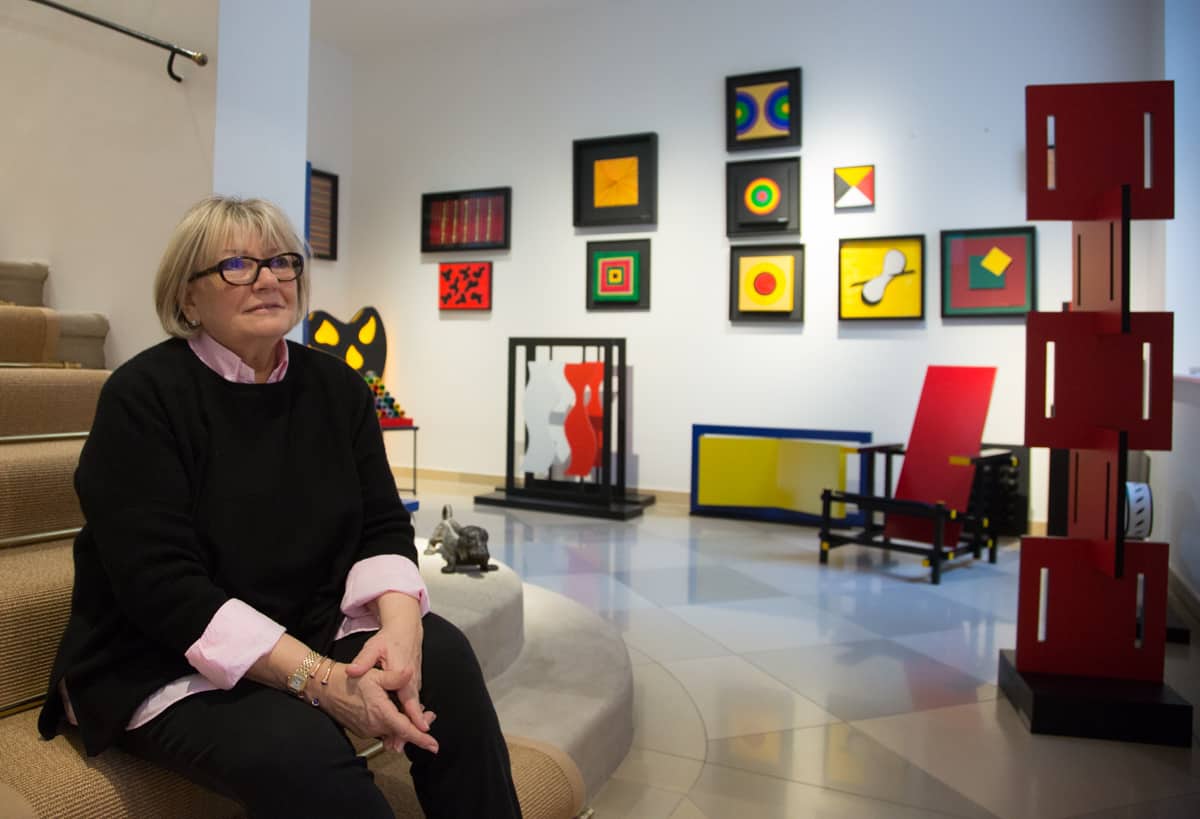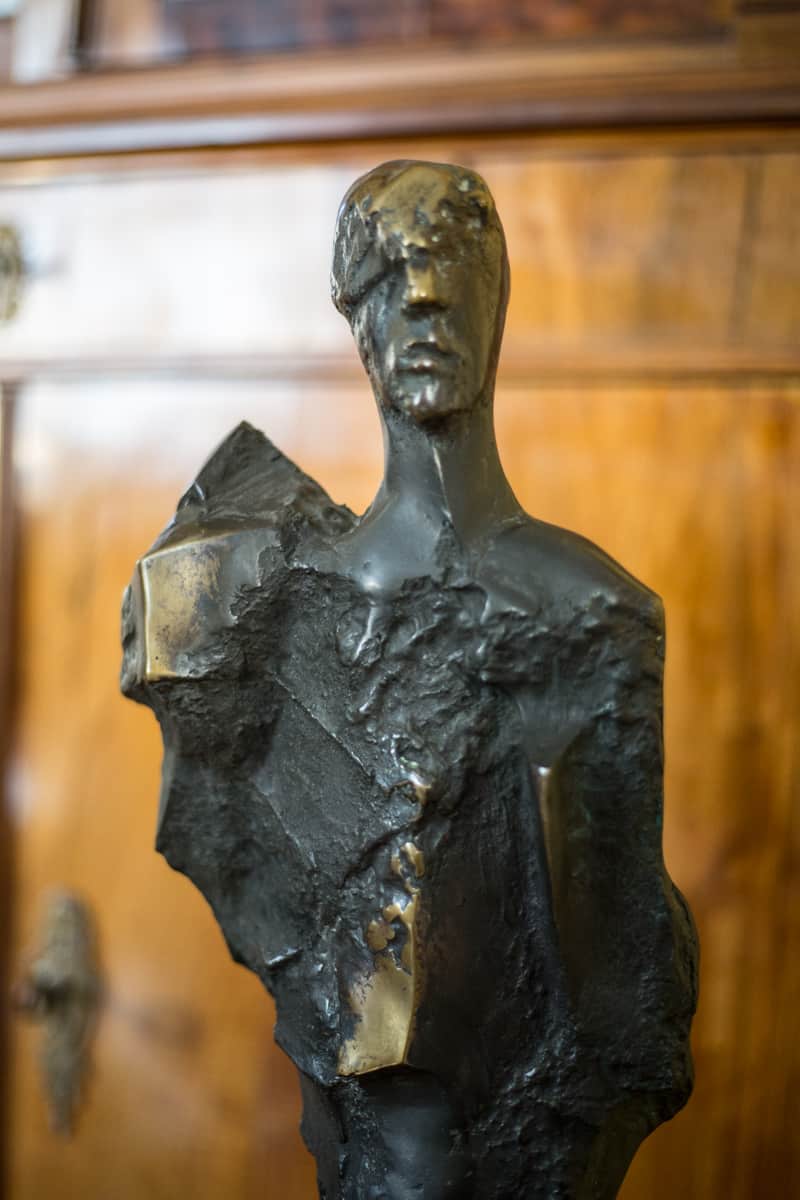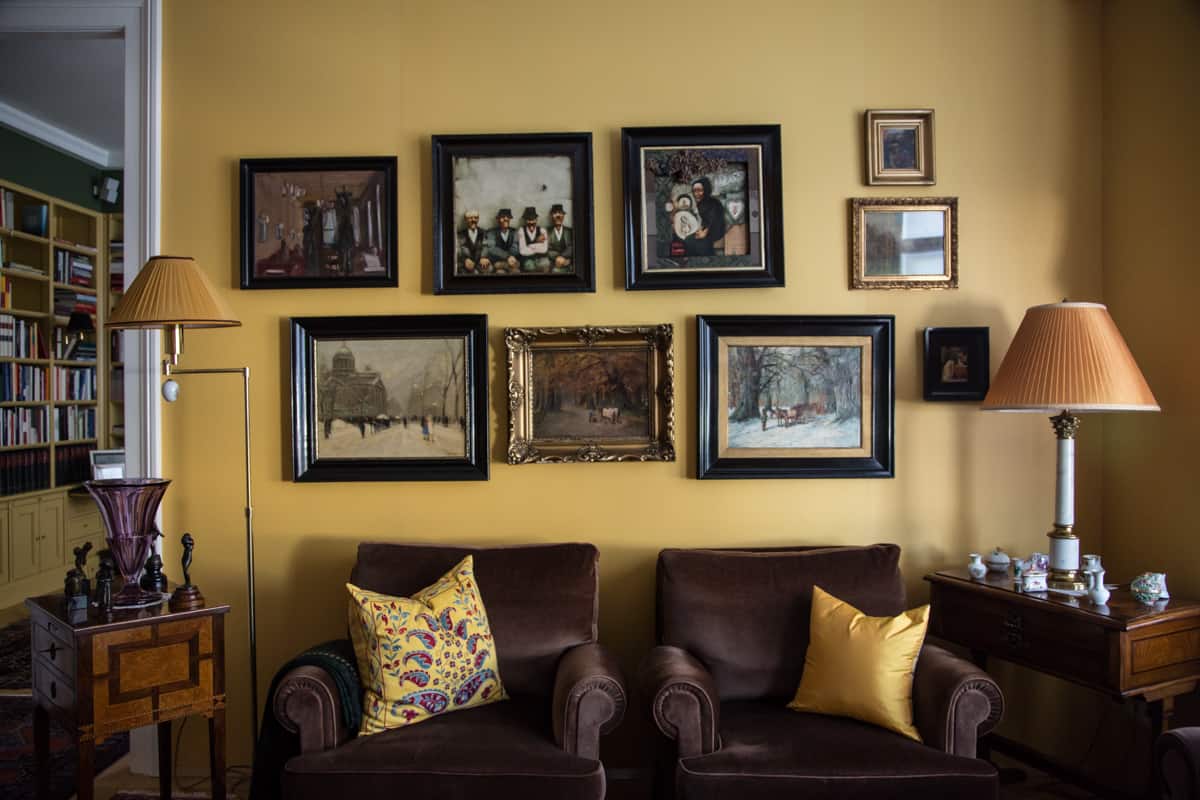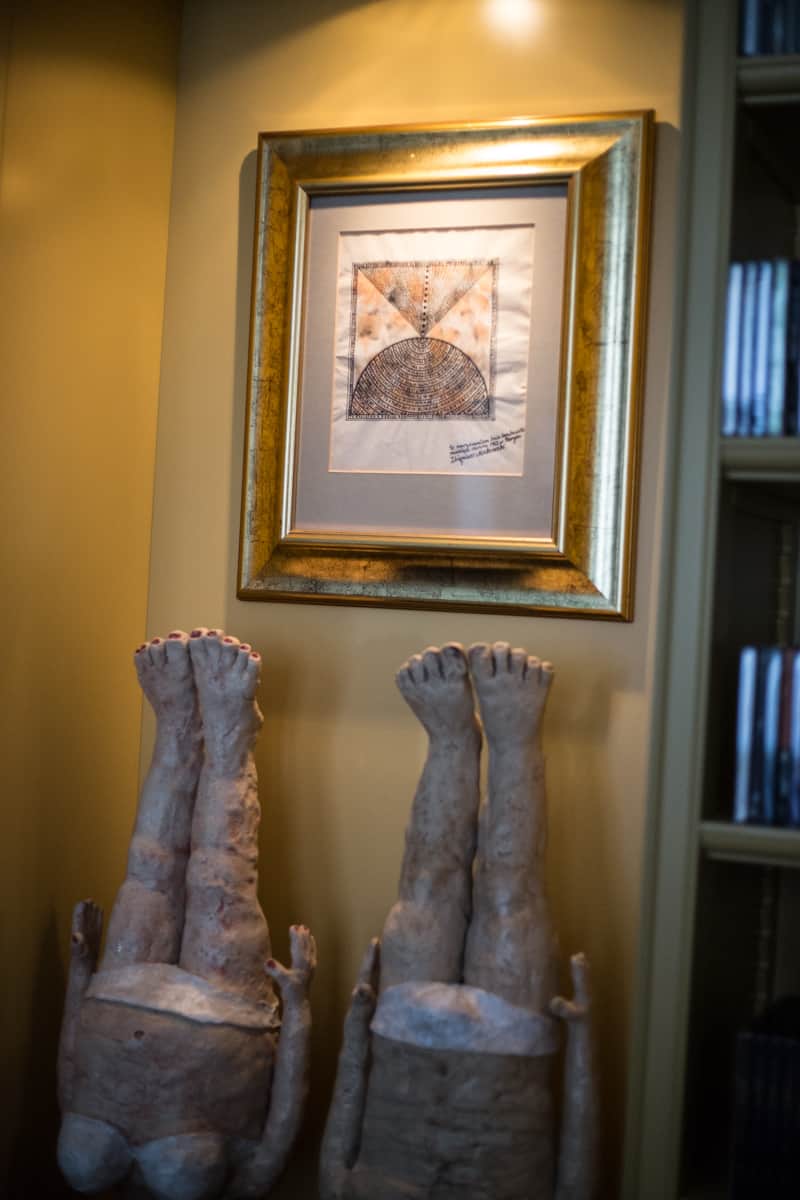I recently travelled to Łódź, where I attended the opening of Veronica Taussig’s sculpture exhibition Red Black and Yellow at the City Art Gallery. Taussig is an artist from Vienna, whose works draw on the great artistic traditions of the 20th century. Her fascination with the works of Henri Matisse has a strong influence on her artistic creations, which carry faint echoes of Constantin Brâncuși, the Russian Constructivists, Hans Arp, Alexander Calder, and Nicolas Schöffer, but she gives them a new shape.
I wondered about this combination of Taussig’s fascination with Matisse and her great awareness of the history of art. During our conversation, it became apparent that Veronica and her husband, Franz Jurkowitsch, are collectors. They own a large art collection which includes works by Central European artists. This was the starting point for our further conversation.
Dobromiła Błaszczyk: Not everyone wants to hang a piece of art on their wall. For many people, it’s enough to visit galleries and museums. What is collecting to you? Is it a necessity, an obsession or an investment?
Veronica Taussig: I like to surround myself with things that delight me, so it is more like an obsession for me.
DB: What was your first impulse to start collecting art?
VT: Throughout my childhood I was surrounded by beautiful things, my parents and grandparents collected furniture, antiques and paintings. Later I was surrounded by people interested in art and collecting. So it is hard to say when the impulse was, if there was one impulse or if it grew with me.
DB: What was the first artwork that was important to you, and for your collection?
VT: At the beginning I was collecting signed lithographs, as they were affordable for me. My first favourite that I owned was an aquarelle from Leonor Fini.
DB: You live in Vienna – a thriving art hub in Central Europe. There are many vibrant institutions in this area related to art (MUMOK, Kunsthalle Vien, Leopold Museum) as well as private galleries and also many artists living in Vienna (also from Poland). Have the artistic programmes of these institutions had an impact on your choices and activities as a collector and someone who supports artistic initiatives?
VT: I visit exhibitions as often as possible and I am happy that I can choose among many options every time I have time to go to see a show. Vienna is very lucky to have this vibrant offering and I am happy to enjoy it as often as possible, as I draw my inspiration both as an artist and also as a collector.
DB: Which other artists do you collect? Can you name some of the younger-generation artists you are interested in?
VT: I collect contemporary Polish artists such as: Edward Dwurnik, Franciszek Starowieyski, Andrzej Wróblewski, Ryszard Winiarski, Henryk Stażewski, Magdalena Abakanowicz, Jerzy Duda-Gracz, and Barbara Falender.
DB: Do you have a favourite artist or artwork in your collection?
VT: My favourite sculptors are Barbara Falender and Magdalena Abakanowicz, and Henryk Stażewski is my favourite painter.
DB: In your collection you have many great artists from Central Europe and from Poland. What are the difficulties connected with buying works in Poland? Do you think that when living abroad it is easy to buy contemporary art from Poland?
VT: From my experience it depends on the artist. I like to meet the artist in person and then it is their decision to sell and whether to make it difficult or not. I remember I once travelled to Paris, because STAROWEJSKI told me that he will only sell in his Paris atelier.
DB: How did your interest in Polish art begin? Why the Polish art scene?
VT: I was lucky to have a very good friend, Tadeusz Spychała, an architect who had a very strong love of art and he introduced me to Polish art. Together we made many excursions to different artists, their exhibitions and ateliers.
Veronica Taussig’s collection, photo: Ula Tarasiewicz
Veronica Taussig’s collection, photo: Ula Tarasiewicz
DB: How would you evaluate the interest in Polish art from your perspective, but also the perspective of Austria and German-language countries?
VT: I like very much the contribution of Polish artists to the Constructivist movement. Artists like Katarzyna Kobro, Władysław Strzeminski and Henryk Stażewski belong to the main representatives of the Constructivist artists. The movement originated in Russia around 1915 and influenced Polish artists as well as the German Bauhaus.
DB: How do you select the works for your collection? Is it an impulse or the result of long term research and preparation?
VT: I must like it, that is my impulse. I act spontaneously without any strategy or research.
DB: Have you ever been forced to sell any works from your collection?
VT: Fortunately not!
DB: Many collectors show their acquisitions in exhibitions. What about you?
VT: I do not stage any exhibitions of my collection – as I have them around me in my house I am constantly surrounded by it and my guests can see them when they visit.
DB: You are also an artist. You create colourful sculptures, reliefs and abstract forms. It’s easy to see that you continue the tradition of both the Russian Constructivists and the German Dadaists. Has the fact that you are a collector had a strong influence on you and your visual education?
VT: I can not differentiate it. Either it is a conscious or sub-concious influence – but honestly I can not tell.
DB: Could you give us some tips for someone who would like to start collecting?
VT: You should be interested in art and you should try to see as much as possible. And from my point of view you must like it! As I said: for me it is not an strategic investment or business, it is more about passion and a gut feeling.
Edited by Lisa Barham
Veronica Taussig’s collection, photo: Ula Tarasiewicz
Veronica Taussig’s collection, photo: Ula Tarasiewicz















